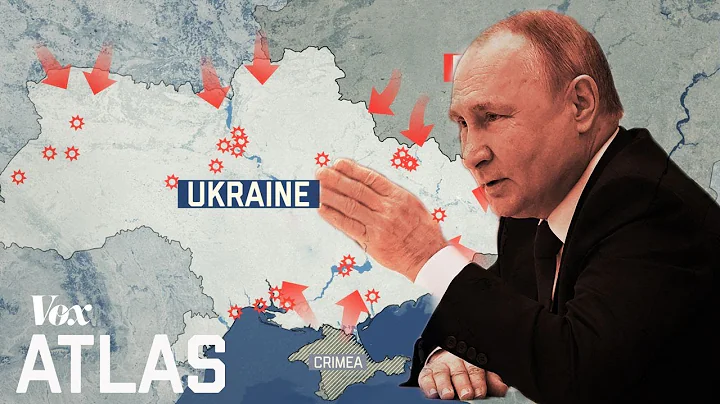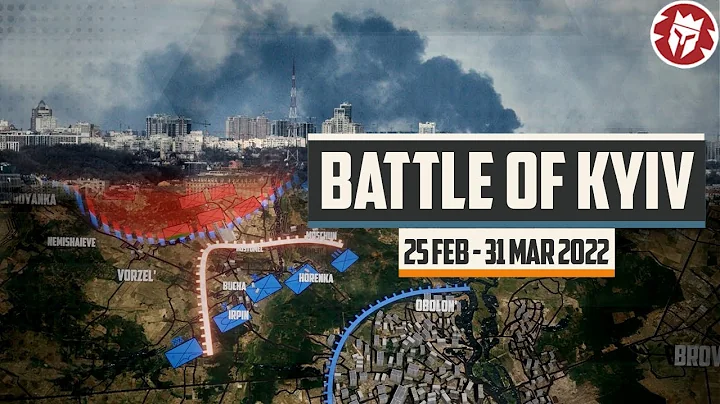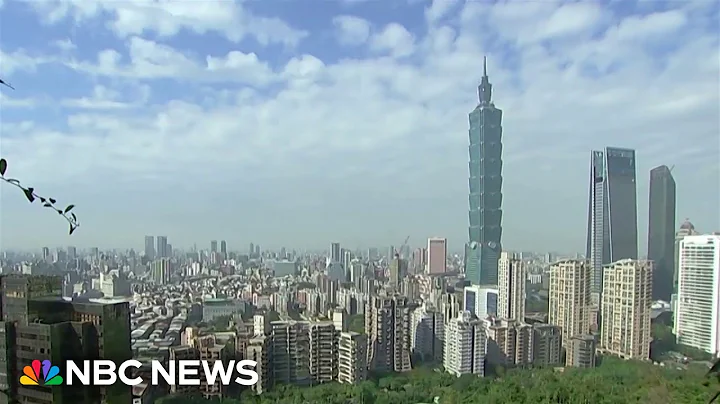
On February 26, 2022, in Kiev, Ukrainian soldiers collected unexploded artillery shells after a firefight
On February 24, 2022, Russian troops entered Ukraine in multiple ways from their own country, Donbas region and Belarus territory. The conflict officially begins.
As of early March, the Russian army had failed to capture Kiev. Although the Russian army had a great advantage in the frontal battle against the Ukrainian army, the war still inevitably fell into a stalemate. In fact, 30 years ago, the military gap between Russia and Ukraine was not as big as it is today.
"Monkey with a Grenade"
When they were both republics of the Soviet Union, Russia and Ukraine were both important pillars of the Soviet Union's military force.
When the Soviet Union disintegrated , Ukraine received a large amount of military heritage, accounting for more than 30% of the total equipment of the Soviet army.
Among them, there are more than 300 naval ships including the aircraft carrier "Varyag" (the predecessor of today's Chinese Navy's Liaoning ship), as well as the An-225 "Dream", which is still the world's largest transport aircraft. (There is news of being destroyed), as well as 43 strategic bombers, 1,500 fighter jets, more than 6,000 tanks and armored vehicles, 176 intercontinental missiles, nearly 2,600 tactical nuclear weapons, and more than 1,000 nuclear warheads. .
At that time, Ukraine was the third largest military power in the world after the United States and Russia.
In terms of equipment level, Ukraine at that time was the third largest military power in the world after the United States and Russia. In addition to equipment, Ukraine also has a number of advanced weapons design bureaus including aerospace engines, aircraft, tanks, and ships, as well as more than 3,500 military industrial enterprises and a large number of high-end military industry talents.
However, the economic deficit during the Soviet period made the Ukrainian economy very nervous. For Ukraine's new government, which does not face the threat of war in the short term, the cost of maintaining these war machines is unaffordable.
Many years later, in 2018, a Russian military expert believed in an interview that Ukraine does not have the financial and organizational capabilities to manufacture nuclear weapons , and it also lacks the control capabilities and maintenance system for the nuclear weapons it already possesses. If it continues to retain nuclear weapons, regardless of Whether a tragedy similar to the "Chernobyl incident" occurs, or whether nuclear weapons are stolen and sold due to an imperfect management system, it will have very serious consequences.
"Ukraine when the Soviet Union collapsed was like a monkey holding a grenade." In an interview in 2018, Ukraine's first president Kravchuk said this.
Therefore, in November 1994, the Ukrainian government agreed to join the Treaty on the Non-Proliferation of Nuclear Weapons, and in December signed the "Budapest Security Assurance Memorandum" with the United States, Russia and the United Kingdom. Afterwards, it officially abandoned its nuclear weapons and received 300 million USD compensation.
Due to the large-scale sales of weapons and equipment and the outflow of military personnel, after 30 years of changes, until the outbreak of this conflict, Russia had an overwhelming advantage over Ukraine in the scale and quality of combat equipment.
Among them, the Russian army has more than three times the number of tanks, artillery and other army equipment than the Ukrainian army; there is also a quantitative gap of about 10 times in air force fighters and navy ships, regardless of generational differences. Although the Ukrainian army has received weapons assistance from some Western countries in recent years and has purchased some weapons, the gap with the Russian army is still huge.

The "Iskander" launch vehicle can carry 2 missiles
Russian missile penetration is fully ahead
On February 24, local time, in the Ukrainian military town of Ivano... In the city of Frankivsk, a slowly growing black spot rushed from the sky and immediately fell into the airport.
A huge fireball erupted from where it touched down, followed by thick black smoke. Fortunately, the impact point of the bomb was in an open area, and there were no reports of large civilian casualties in the area.
On the first day of the battle, at least three missile brigades deployed by the Russian army on the border launched a large number of tactical missiles , launching precise strikes against important military targets in Ukraine.
As of February 28, the Russian army claimed to have destroyed 1,114 Ukrainian military targets, including 31 communication and command centers, 48 radar stations, 31 air defense systems , 314 tanks, etc.
A considerable part of these results were achieved by the "Iskander" series of missiles.
The predecessor of the "Iskander" missile was the "Oka" missile whose project was shut down after the end of the Cold War. In the late 1990s, Russia restarted the project.

On February 26, 2022, the Ukrainian army launched a "Dot-U" missile at an oil depot in Donetsk, which was intercepted by the air defense forces.
The missile was put into service in 2005 and can operate on all flat areas except sand and swamps. Terrain launcher can also work normally in an environment of plus or minus 50 degrees Celsius.
"Iskander" has extremely strong penetration capabilities and can perform violent maneuvers during flight, making interception very difficult. The "Iskander" launch vehicle is loaded with two missiles. Its Russian military-owned models M-type and K-type (cruise version) have a range of up to 500 kilometers, which is fully ahead of the Ukrainian army's "Dot-U".
According to media photo analysis, during this conflict, the Russian army also launched precision-guided weapons such as sea-based 3M14 "Caliber" cruise missiles and Kh-31P supersonic anti-radiation missiles, which caused heavy losses to the Ukrainian army's command and combat system. .
On the other side, on February 25, the Ukrainian army used the "Dot-U" (NATO codename "Scarab") tactical missile for the first time to attack Millerovo, Rostov Oblast, in Russia. Air Force base and destroyed a Su-30M2 "Flanker C" fighter jet that had not taken off.
On December 26, the Ukrainian army launched four "Dot-U" missiles into the Donetsk area, two of which targeted a large oil depot that had been attacked by the Ukrainian army many times.
According to reports, these two missiles were successfully intercepted by Donetsk civilian armed forces.
The "Dot-U" missile was developed during the Soviet period and entered service in 1989. Its carrier vehicle can travel amphibiously and can be launched by road mobility; the launch vehicle carries one missile with a range of about 120 kilometers.
As the main short-range tactical missile equipped during the Soviet period, the "Dot-U" missile has been deployed in many member republics. After the collapse of the Soviet Union, Ukraine retained approximately 500 Dot-U missiles.
Due to its long service life, the Russian army carried out life-extending upgrades to the "Dot-U" equipment in 1999, but the Ukrainian army has no news of substantial upgrades and maintenance of the equipment.
In the 2014 Russian-Ukrainian conflict, the Ukrainian army used "Dot-U" missiles in combat. After the conflict, it announced that it would accelerate the development and deployment of "Thunder" missiles to replace the "Dot-U". But as of now, the main equipment of the Ukrainian missile brigade is still the "Dot-U".

Su-27 fighter planes
Air combat: the end that never started
During the battle on February 24, various missiles of the Russian army violently attacked military targets in Ukraine, with major airports and radar stations bearing the brunt.
Since many radar stations and command centers were destroyed, the Ukrainian air force’s already undominant fighter aircraft became even more isolated and unable to organize an effective counterattack.
The main fighters of the Ukrainian Air Force are the Su-27 "Flanker" and MiG-29 "fulcrum". The Su-27 fighters of the Ukrainian army are all manufactured in the Soviet Union and have been in service for a long time. Due to poor maintenance, a large number of Su-27s in stock are no longer able to take off.
Although the Ukrainian army, which has been unsuccessful in purchasing new fighter jets in recent years, has carried out life-extending modifications and modernization upgrades on the Su-27, the upgrade speed is slow and the training time of the pilots is also below average.
According to media statistics, before the conflict, only 32 (one said 28) Su-27s (including most unupgraded aircraft) and 37 (one said 21) MiG-29s met combat requirements.

MiG-29 fighter aircraft
As of now, the main equipment of the Ukrainian missile brigade is still the "Dot-U".
After the conflict, the performance of the Su-27 was regrettable - on the morning of February 24, before the formal air battle, one of them fled directly to Romanian territory; the next day, another one was accidentally shot down by friendly forces. 1 was destroyed at the airport.
Although it cannot organize a large-scale counterattack, the Su-27 is still taking off sporadically to defend the dignity of the Ukrainian Air Force.
The situation of the Ukrainian MiG-29 is similar to that of the Su-27. Although it has been modernized and upgraded, the avionics level gap with the Russian aircraft is still not small.
In 2021, a MiG-29 was driven and damaged by a drunken officer, which can be called a shameful incident for the Ukrainian Air Force.
In the recent conflict, a Ukrainian MiG-29 aircraft known as the "Ghost of Kiev" appeared. It is reported that the aircraft shot down 2 Russian Su-25 "Frogfoot", 1 Su-27, 1 MiG-29M, and even 2 Su-29M without any wingman cooperation. -35 "Super Flanker".
For a moment, the global media was shocked and speculated on which ace pilot the owner of the "Ghost of Kiev" was.
From the perspective of air combat, although the MiG-29 has been modernized and upgraded, the weapons it can mount are limited: it shot down 2 Soviet fighters in one day, which formed a generation gap and could strike beyond visual range. With 6 enemy planes including -35, it is really an impossible mission.
Even if the "Ghost of Kiev" really exists, if it is targeted by the Russian army, no matter how superb its driving skills are, it will not change the fate of the sky. This is the helplessness of technological backwardness.
In this conflict, the main aircraft types of the Russian army are Su-25, Su-27S/SM, Su-30MKI/SM, Su-35, etc. In the first wave of attacks in the conflict, most of the Ukrainian army's ground radar and anti-aircraft firepower were destroyed, allowing Russian fighter planes to perform missions in Ukrainian airspace relatively safely.

Turkish TB-2 integrated surveillance and combat drone
Since the number of fighter aircraft that the Ukrainian army can take off for combat is extremely limited, no details of the air battle between the two sides have been reported. On February 28, the Russian army claimed to have complete control of the air in Ukraine. Although it is just a statement from one family, it is an indisputable fact that the combat space of Ukrainian fighter planes has been eroded smaller and smaller.
Delaying the Russian army’s advance with light military equipment
On December 27, the Uzbek Army Headquarters disclosed an image synchronized by a drone. The video shows that the drone attacked the Russian supply convoy, and the "detonation" caused by the violent explosion of the supply truck spread to other vehicles.
The next day, the Ukrainian Embassy in Turkey released a video of a drone destroying a Russian Buk anti-aircraft missile system.
The protagonists of the above two videos are the Turkish TB-2 surveillance and combat drone.
TB-2 once shined in the Naka conflict between Armenia and Azerbaijan. It destroyed a large number of Russian-made weapons equipped by the runner-up for the Afghan army, and was called the "Russian-made weapon killing tool" by the outside world.
The Ukrainian army first purchased 6 TB-2 UAV systems from Turkey in 2018, and after the Nagorno-Karabakh conflict ended, it placed an additional order for 48 more.
In this conflict, after the first round of attacks by the Russian army, some of the TB-2 drone systems that were not destroyed began to counterattack the Russian ground forces. Although the Russian army has anti-drone weapons and powerful anti-aircraft firepower, the TB-2 is flexible in movement, finds gaps to attack Russian ground forces, and has repeatedly achieved results. It is one of the few bright spots of the Ukrainian army in this conflict.
In addition, after the Russia-Ukraine conflict in Crimea in 2014, the United States, Britain, Germany, France and other countries provided varying degrees of military assistance to Ukraine. Countries have provided equipment and materials including AN/TPQ-36 mortar positioning radar system, FIM-92 "Stinger" portable air defense missile, "Javelin" anti-tank missile and helmets.
These light equipment are mainly aimed at the Russian army's armored forces and helicopters.
In an unfavorable situation on the frontal battlefield, the Ukrainian army can also use guerrilla methods to slow down the advancement of the Russian armored forces and cause effective damage.
Although in 2018 and during this conflict, it was revealed that some "Javelin" missiles aided by the United States and the UK and some "Stinger" missiles aided by Lithuania had embarrassing situations where their service life had expired and the system could not be started. , but these flexible and mobile individual weapons can pose a greater threat to Russian tanks in street fighting.
Data from the Ukrainian Army General Staff stated that as of February 28, the Russian army had suffered 5,300 casualties, and 29 aircraft, 29 helicopters, 191 tanks, 816 armored vehicles and other equipment had been destroyed.
The Russian mechanized troops that penetrated deep into the hinterland of Ukraine advanced very quickly in the early stages of the conflict. After February 26, the speed slowed down. Some analysts say that logistical supply problems and the destruction of transportation trunk lines by the Ukrainian army are the main reasons.
As the war situation has fallen into a stalemate, both Russia and Ukraine have a certain degree of willingness to negotiate.
"We met thousands of miles away, but we had a dream in thirty years." We hope that Russia and Ukraine will maintain maximum restraint and calmness, resolve their differences at the negotiation table, and avoid letting innocent civilians fall into a more bloody whirlpool of war.
Editor-in-chief Wu Yangyu





















